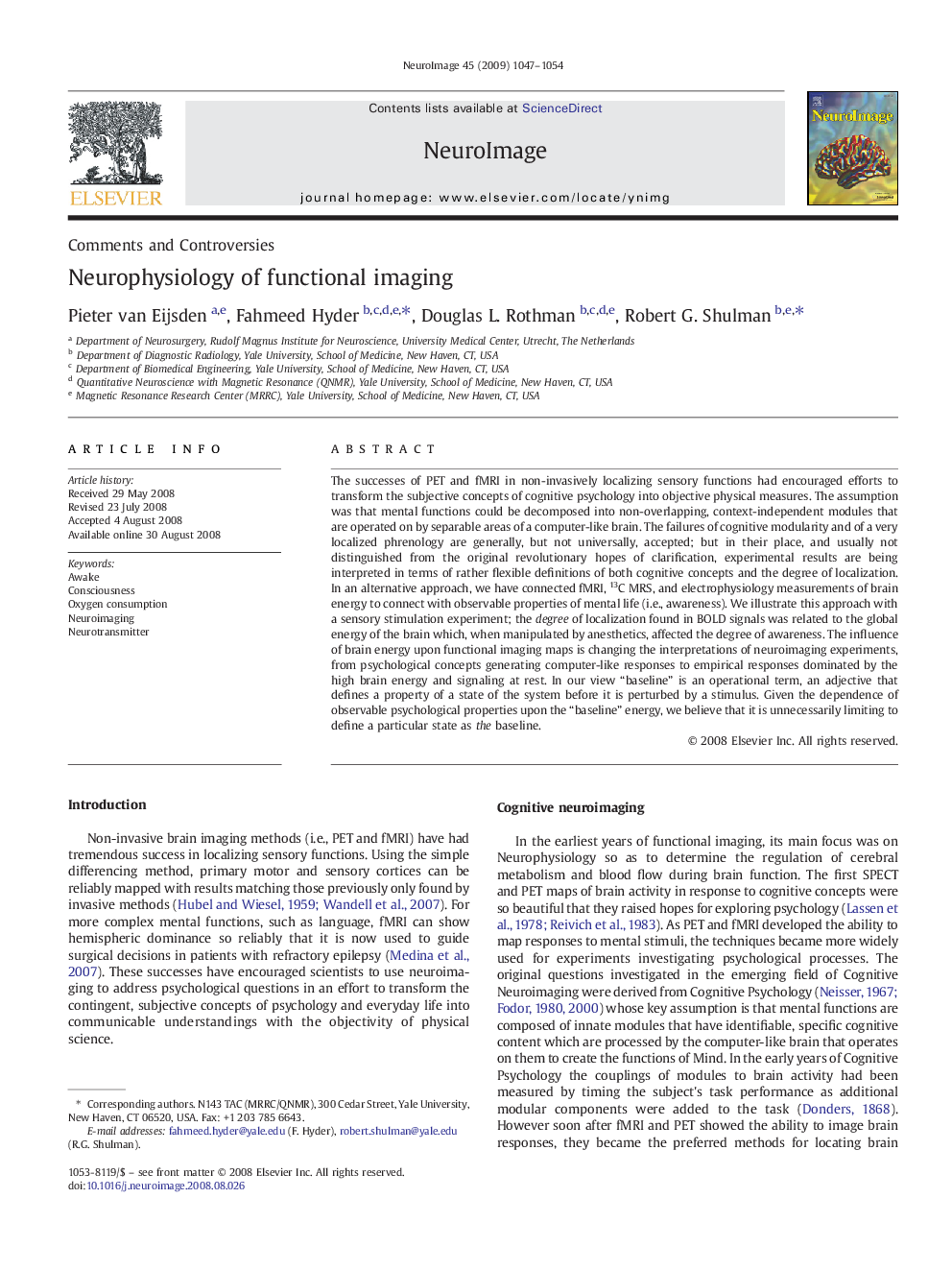| Article ID | Journal | Published Year | Pages | File Type |
|---|---|---|---|---|
| 3072511 | NeuroImage | 2009 | 8 Pages |
The successes of PET and fMRI in non-invasively localizing sensory functions had encouraged efforts to transform the subjective concepts of cognitive psychology into objective physical measures. The assumption was that mental functions could be decomposed into non-overlapping, context-independent modules that are operated on by separable areas of a computer-like brain. The failures of cognitive modularity and of a very localized phrenology are generally, but not universally, accepted; but in their place, and usually not distinguished from the original revolutionary hopes of clarification, experimental results are being interpreted in terms of rather flexible definitions of both cognitive concepts and the degree of localization. In an alternative approach, we have connected fMRI, 13C MRS, and electrophysiology measurements of brain energy to connect with observable properties of mental life (i.e., awareness). We illustrate this approach with a sensory stimulation experiment; the degree of localization found in BOLD signals was related to the global energy of the brain which, when manipulated by anesthetics, affected the degree of awareness. The influence of brain energy upon functional imaging maps is changing the interpretations of neuroimaging experiments, from psychological concepts generating computer-like responses to empirical responses dominated by the high brain energy and signaling at rest. In our view “baseline” is an operational term, an adjective that defines a property of a state of the system before it is perturbed by a stimulus. Given the dependence of observable psychological properties upon the “baseline” energy, we believe that it is unnecessarily limiting to define a particular state as the baseline.
